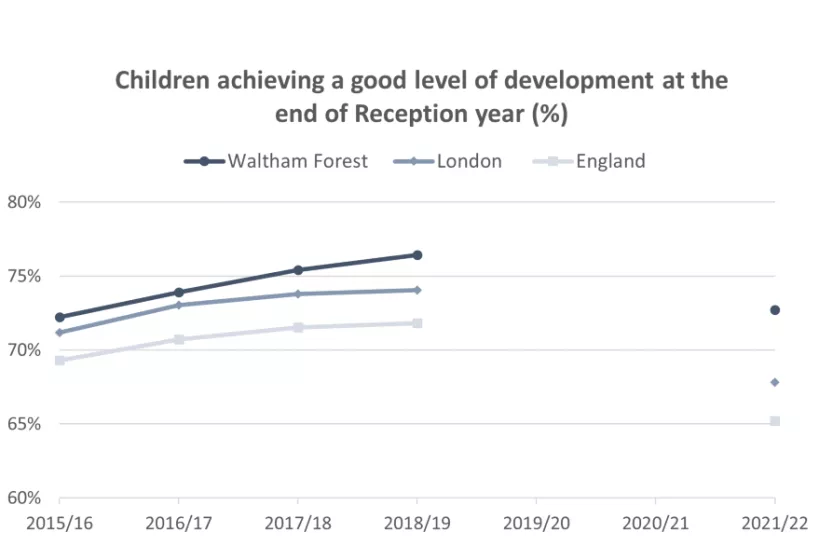Last updated: 20 May 2024
Next review: 20 May 2025
This content is part of the Waltham Forest JSNA. To see other JSNA content, visit the JSNA landing page
School readiness is a key measure of childhood development. Children from more deprived backgrounds are at greater risk of poorer development and evidence shows that differences in attainment by social background emerge early in life.
Children are considered to have reached a good level of development if they meet the expected level in the teacher-assessed early learning goals for personal, social, and emotional development, physical development, and communication and language by the end of Reception year (when children are aged four to five years old). They should also meet the early learning goals for maths and literacy in specific areas.
Due to the COVID-19 pandemic, the ‘school readiness’ indicator was not reported in 2019 to 2020 and 2020 to 2021. 2021 to 22 statistics are the first since reforms to the Early years foundation stage (EYFS) statutory framework were introduced in September 2021 which significantly revised the EYFS profile. Assessment outcomes from 2021 to 2022 therefore cannot be directly compared to previous years.
Prior to the 2021 reforms, the proportion of children who achieved a good level of development in Waltham Forest showed a positive trend, rising from 7.6% in 2015/16 to 76.4% in 2018/19. Waltham Forest has consistently performed better than England and London since 2015/2016 and the 2021 to 22 performance (72.7% of children achieving a good level of development at the end of Reception year) was also above both the national (65.2%) and regional average (67.8%).

Source: OHID Public Health Outcomes Framework. Data from Department for Education, EYFS Profile. Date accessed: 24 March 2023.